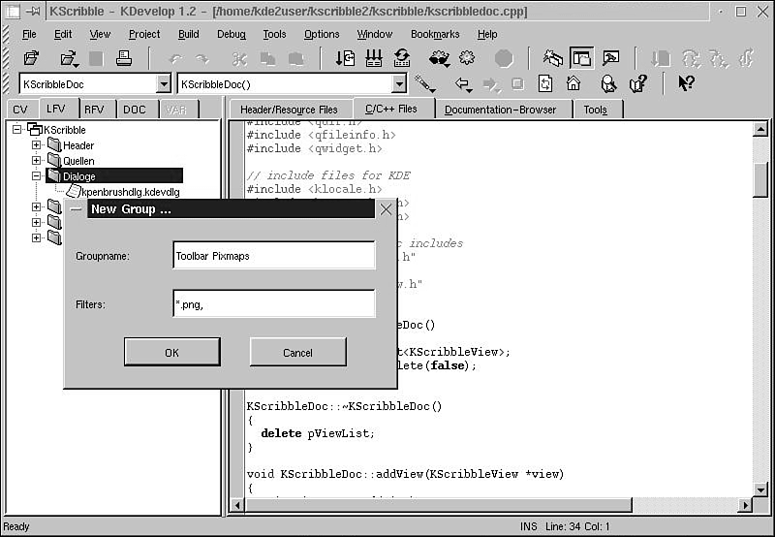Although the documentation Tree View and the Classviewer already provide what you, as a developer, will make use of most of the time, you should certainly be given access to the actual files of your project. This is provided by the File Viewers, separated into two trees. One is the Logical File Viewer (LFV); the other is the Real File Viewer (RFV), which you'll have a closer look at now. The first page on the right of the Classbrowser tree is the Logical File Viewer (LFV). Its purpose is generally to provide access to your project files, but in a more sophisticated way than a simple Tree View. First, only the registered project files are shown, such as header files, implementation files, READMEs, and the like. These are collected into groups, which are shown as folders. On creating a new project with the Application Wizard, a set of predefined folders is already created for your project, which you can extend directly in the LFV by adding new folders via a dialog or editing the given folder's file filters. Figure 18.9 shows a sample project with its files displayed in the LFV, as well as the dialog for adding a new group: What else does the LFV offer? Clicking a file you want to open automatically opens the file and the right application to display it. A good example is pixmap graphics, which are often used in KDE applications as menubar and toolbar symbols. On selecting such a pixmap, KIconEdit gets started inside KDevelop on the Tool page and lets you edit the pixmap directly. The same functionality is provided for a number of common file formats appearing in projects, such as dialog definition files for KDevelop's dialog editor and po files containing translations for a given language. | |
On the other hand, you may need to have access to the whole directory structure of your project and all files therein. Therefore, the Real File Viewer (RFV), located next to the LFV, is the right place to go for actions such as deleting files, adding files to the project, and even some really cool things such as using CVS (Concurrent Version System) to manage your project—and all that from within one graphical interface (see Figure 18.10). In detail, the RFV offers Switching between project files and all file display modes Updating the Makefile.ams of selected folders or the whole project tree Creating and deleting files and folders Changing a subdirectory's target to a shared or static library Using CVS commands on files and folders, such as adding, removing, updating, and check in
Of course, opening files works the same as with the LFV. | |
| |

